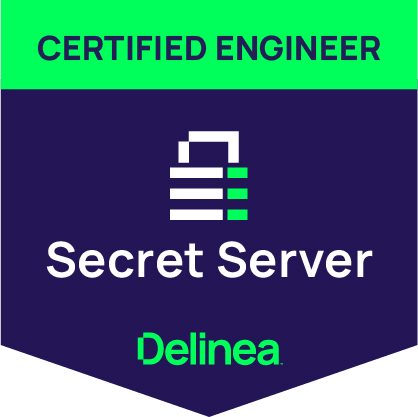Secret Server functions explained: Secret Template
Delinea Secret Server
→ What is a Secret Template?
→ Which Templates are available?
In this short description I will answer these questions.
On this page you can learn more about the server functions.
– written by Reto Wintsch, Secret Server Engineer
What is a Secret Template?
- A template is used to define the format and content of a secret (for example, a password).
- Secret Server knows about 50 templates.
- Additional templates can be generated by the user.
What does a Template look like?


- A template can have a connection to a launcher.
- The launcher allows to use the password (Secret) or the account to connect to a server:

- Another type of template, for example, can be a web password:

- The web password then uses the Web Password Filler as a launcher.
- This means that you can use this secret to automatically log on to a specific website on the Internet.

Which predefined templates are available?
| Active Directory – Machine Names |
| Active Directory Account |
| Amazon IAM Console Password |
| Amazon IAM Key |
| Azure AD Account |
| Bank Account |
| Cisco Account (SSH) |
| Cisco Account (Telnet) |
| Cisco Enable Secret (SSH) |
| Cisco Enable Secret (Telnet) |
| Cisco VPN Connection |
| Combination Lock |
| Contact |
| Credit Card |
| DevOps Secrets Vault Client Credentials |
| Generic Discovery Credentials |
| Google IAM Service Account Key |
| Healthcare |
| HP iLO Account (SSH) |
| IBM iSeries Mainframe |
| MySql Account |
| OpenLDAP Account |
| Oracle Account |
| Oracle Account (TCPS) |
| Oracle Account (Template Ver 2) |
| Oracle Account (Walletless) |
| Password |
| Pin |
| Product License Key |
| SAP Account |
| SAP SNC Account |
| Security Alarm Code |
| Social Security Number |
| SonicWall NSA Web Admin Account |
| SonicWall NSA Web Local User Account |
| SQL Server Account |
| SSH Key |
| Sybase Account |
| Unix Account (Privileged Account SSH Key Rotation – No Password) |
| Unix Account (Privileged Account SSH Key Rotation) |
| Unix Account (SSH Key Rotation – No Password) |
| Unix Account (SSH Key Rotation) |
| Unix Account (SSH) |
| Unix Account (Telnet) |
| Unix Root Account (SSH) |
| VMware ESX/ESXi |
| WatchGuard |
| Web Password |
| Windows Account |
| z/OS Mainframe |
More explanations of Secret Server functions can be conveniently found at:
Fast find/Delinea
Do you have further questions about Secret Server? Contact Reto Wintsch directly.
 Previous Post
Previous Post Next Post
Next Post